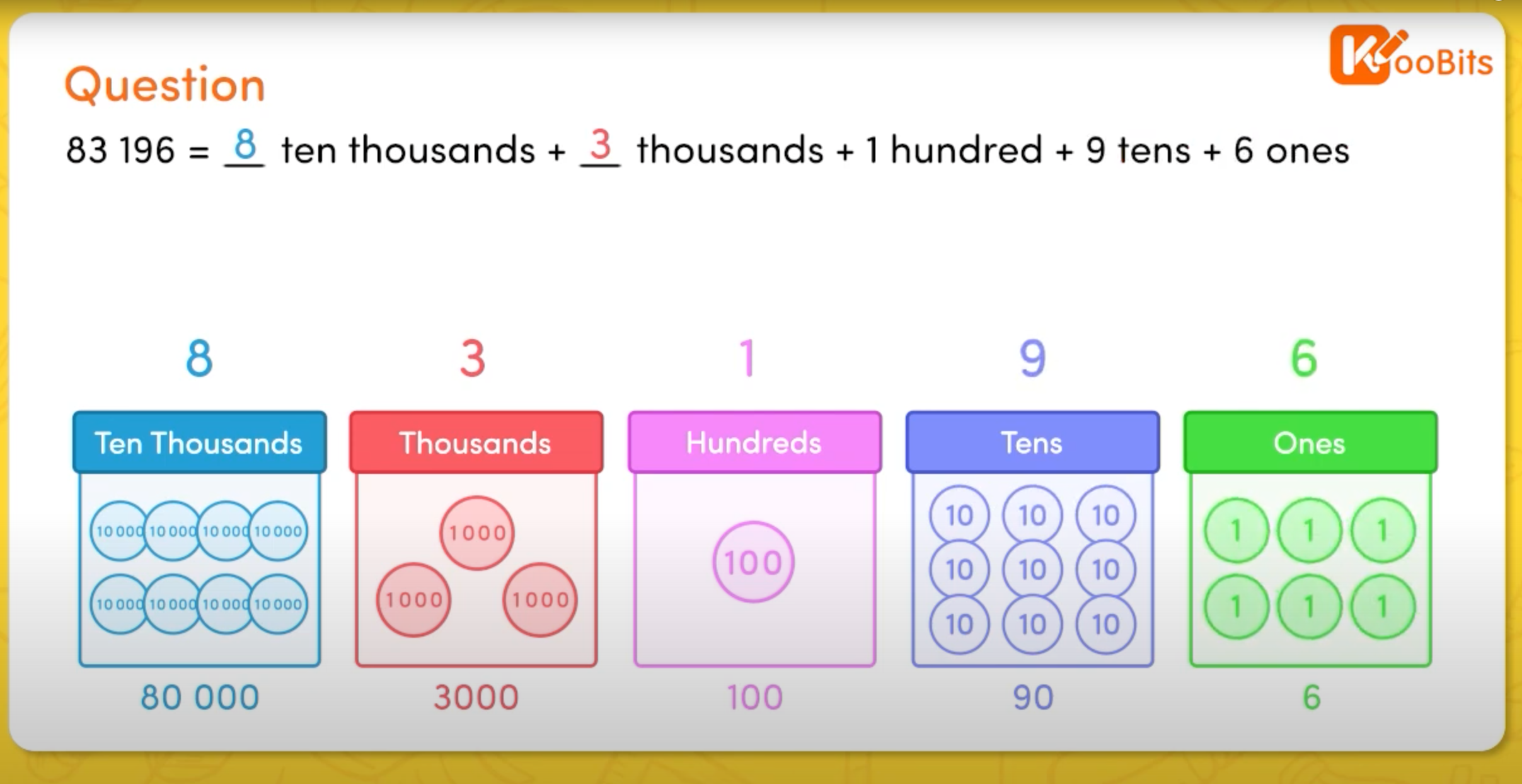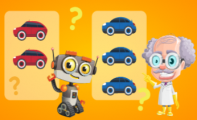
Primary 2 Maths Curriculum
To help your child build a strong maths foundation, KooBits’ learning plan gives you all the primary 2 topics covered under Singapore MOE’s syllabus, a globally-recognised curriculum.
We have 100,000+ P1-P6 questions to help your child master the syllabus at their own pace. Start your trial today to get your child learning and practising maths ↓







Numbers To 1000
- Use base ten blocks to read and write numbers to 1000
- Count on by 1s to 1000
- Count on by 10s to 1000
- Count on by 100s to 1000
- Use place value charts to show numbers to 1000
- Write numbers to 1000 in numerals
- Write numbers to 1000 in words
- Write numbers to 1000 in expanded form
- Compare numbers to 1000
- Order 3-digit numbers
- To identify the greatest or the smallest number
- To form smallest/greatest value with 3 digits
- Find the missing numbers in a pattern
- Identify odd and even numbers
Addition Within 1000
- Add 1-digit numbers to 3-digit numbers without regrouping
- Add 2-digit numbers to 3-digit numbers without regrouping
- Add 3-digit numbers without regrouping
- Add up to 3-digit numbers with regrouping in ones
- Add up to 3-digit numbers with regrouping in tens
- Add up to 3-digit numbers with regrouping in tens and ones
- One-step addition problem involving total quantity after an event
- Two-step problem involving two persons with more-than relationship. Find total quantity for both persons (up to 10)
- Two-step problem involving two events with more-than relationship. Find total quantity for both events (up to 10)
- Two-step problem involving two persons with more-than relationship. Find total quantity for both persons (up to 20)
- Two-step problem involving two persons with more-than relationship. Find total quantity for both persons (up to 40)
- Two-step problem involving two persons with more-than relationship. Find total quantity for both persons (up to 100)
- Two-step problem involving two persons with either more-than or less-than relationship. Find total quantity for both persons
Subtraction Within 1000
- Subtract ones from 3-digit numbers without regrouping
- Subtract 2-digit numbers from 3-digit numbers without regrouping
- Subtract 3-digit numbers without regrouping
- Subtract 3-digit numbers with regrouping in tens and ones
- Subtract 3-digit numbers with regrouping in hundreds and tens
- Subtract 3-digit numbers with regrouping in hundreds, tens and ones
- Subtract within 1000 across zeros
- One-step problem involving the total quantity after an event
- Two-step problem involving two persons with less-than relationship. Find total quantity for both persons (up to 10)
- Two-step problem involving two events with less-than relationship. Find total quantity for both events (up to 10)
- Two-step problem involving two persons with less-than relationship. Find total quantity for both persons (up to 20)
- Two-step problem involving two persons with less-than relationship. Find total quantity for both persons (up to 40)
- Two-step problem involving two persons with less-than relationship. Find total quantity for both persons (up to 100)
- Two-step problem involving two persons with less-than relationship. Find total quantity for both persons
Multiplication Table of 2, 5, and 10
- Multiply using equal groups
- Divide by sharing
- Divide by grouping
- Write multiplication or division equation
- Multiplication Facts of 2
- Multiplication Facts of 5
- Multiplication Facts of 10
- Divide by sharing using related multiplication facts of 2
- Divide by grouping using related multiplication facts of 2
- Divide by sharing using related multiplication facts of 5
- Divide by grouping using related multiplication facts of 10
Multiplication Table of 3 and 4
- Multiplication Facts of 3
- Multiplication Facts of 4
- Divide by sharing using related multiplication facts of 3
- Divide by grouping using related multiplication facts of 3
- Divide by sharing using related multiplication facts of 4
- Divide by grouping using related multiplication facts of 4
- Find related multiplication facts of 2, 3, 4, 5 and 10
- Solve 1-step word problems involving multiplication
- Solve 1-step word problems involving division
- One-step division problem involving number of groups and quantity of each group
- One-step multiplication problem involving number of groups and quantity of each group
Length
- Estimate length in metres
- Use a centimetre ruler to measure length
- Measure a centimetre tape to measure length
- Measure lines in centimetres
- Using appropriate units of measurement
- Compare and find differences in heights in metres
- Compare and find differences in length in metres
- Compare and find differences in lengths of objects in centimetres
- Measure length in centimetres using a different start point
- Solve word problems involving length in metres
- Solve word problems involving length in centimetres
- One-step problem involving heights with terms “taller or shorter”
- One-step problem involving length of single item and total length
Mass
- Measuring mass in kilograms
- Measuring mass in grams
- Compare mass using words
- Estimate mass in grams
- Using appropriate units of measurement
- Addition and subtraction of mass
- Multiplication and division of mass
- One-step multiplication problem involving unitary mass and number of items
- One-step division problem involving total mass and unitary mass
- One-step problem involving mass in an event
- One-step problem involving mass of two persons
Models
- Use part-whole models to solve addition problems: putting together
- Use part-whole models to solve subtraction problems: finding one part
- Use part-whole models to solve addition problems: adding on
- Use part-whole models to solve subtraction problems: taking away one part
- Use comparison models to solve addition problems: finding the greater number
- Use comparison models to solve subtraction problems: finding the smaller number
Fractions
- Use fractions to describe equal parts
- Name unit fractions
- Recognize and name a fractional part of a whole
- Recognize the number of unit fractions in one whole
- Compare unit fractions
- Compare and order unit fractions
- Compare and order like fractions
- Compare and find the smallest or the greatest fraction in a list of fractions with the same numerator
- Compare and find the smallest or the greatest fraction in a list of fractions with the same denominators
- Given one fraction, find the fraction to add up to one whole
- Adding like fractions within one whole (with denominators not exceeding 12)
- Subtracting like fractions within one whole (with denominators not exceeding 12)
2D Shapes
- Identify lines and curves
- Identify and name 2D shapes
- Identify shapes of circle, semicircle, quarter circle, triangle, rectangle and square
- Combine and separate plane shapes
- Make figures with different shapes
- Complete patterns with 2D shapes
- Identify pattern formations involving shapes of circle, semicircle,quartercircle, triangle, rectangle and square
3D Shapes
- Identify three-dimensional shapes
- Identify flat surfaces
- Count sides, vertices, edges and faces
- Make solid figures with three-dimensional shapes
- Make repeating patterns with solid shapes
- Make patterns with solid shapes involving changes in two attributes
Time
- Read time to the nearest 5 minutes
- Tell time in hours and minutes
- Use a.m. and p.m. to show morning, afternoon or night
- Use visual cues to tell time
- Duration of 1 hour and half an hour
- To find time 1 hour or 2 hours before or after a given time
- To find time 30 minutes before or after a given time
Money
- Counting money in dollars and cents
- Read and write the prices in dollars and cents in decimal notation
- Write amounts of money in different ways
- Exchange cents for dollars
- Exchange dollars for cents
- Compare two or three amounts of money
- Solve word problems involving money in dollars only
- Solve word problems involving money in cents only
- Two-step problem involving two persons with more-than relationship. Find total amount (in dollars) for both persons
- Two-step problem involving two persons with less-than relationship. Find total amount (in dollars) for both persons
- One-step problem involving initial and final amount for a payment event, find amount for an item
- Two-step addition problem involving initial amount for a payment event
- Two-step problem involving final amount for two payment events
Volume
- Compare the volumes of liquid in containers of the same size
- Estimate volume in litres
- Comparing and ordering volume in litres
- Given capacity of one container, find total volume
- One-step division problem involving volume
- One-step multiplication problem involving volume
Picture Graphs
- Make and interpret picture graphs
- Interpret picture graphs in both vertical and horizontal forms
- Solve 1-step word problems using data from picture graphs
- Understand the use of a symbol to represent one object in a graph with more-than relationship
- Understand the use of a symbol to represent one object in a graph with fewer-than relationship
- Identify the greatest or smallest amount
High-ability - Numbers to 1000
- Add two numbers written as tens and ones
- Add numbers written as tens (single digit) and ones
- Add numbers written as tens (two digits) and ones
High-ability - Addition & Subtraction
- Two-step addition problem involving final quantity after two events
- Two-step addition problem involving initial quantity after two events
- Two-step subtraction problem involving final quantity after two events
- Two-step problem involving three persons
- Two-step problem involving the final quantity after an event
- Given total quantity and quantity for one item, find quantity relationship
High-ability - Multiplication & Division
- Two-step problem involving multiplication and subtraction
- Two-step problem involving multiplication and addition
- Two-step problem involving groups, total quantity and remaining quantity
- Two-step problem involving total quantity in a different number of groups
- Three-step problems involving the total number of legs of animals
High-ability - Measurement
- Two-step problem involving heights of three persons
- Two-step problem involving lengths of cut items
- Two-step problem involving changes in the height of a person and his relationship to an unchanged object
- Two-step problem involving unitary length and number of cut pieces
- Three-step problem involving lenghts of two items and total length required
- Two-step problem involving mass requirement of an item for another set of similar meal
- Two-step problem involving difference in the mass of two items with given mass for item one and the total
- Three-step problem involving mass of three persons
- Given starting time and duration, find ending time of an event
- Given ending time and duration of two events, find starting time
- Given starting time, duration and time relationship, find ending time
High-ability - Models
- One-step problem involving total quantity and number groups, find quantity in each group
- One-step problem involving total quantity and quantity for one person, find quantity for the other person
- Two-step problem involving age of one person and the relationship to the other person, find the total age
- Two-step problem involving number of groups and quantity in each group, find final quantity after one event
- Two-step problem involving total quantity and quantity in each group, find number of groups after one event
High-ability - Fractions
- One-step problem involving adding fractions with the same denominator
- One-step problem involving subtracting fractions with the same denominator
- Find the fraction of item left after two events
- Given initial quantity, quantity for one person and the final fraction, find quantity for the other person
High-ability - Money
- One-step multiplication problem invovling payment for an item in quantity
- Two-step problem involving final change amount after two payment events
- Find total value involving money of different denominations
- Two-step problem involving initial amount and cost of two items in a payment event, find the final amount
- Three-step problem involving amount for two persons and the relationship to the third person, find the total amount
High-ability - Picture Graphs
- Solve problem using data given in a picture graph
- Solve problem using data given in a picture graph with more or less concept
- Solve problem using data given in a picture graph with most or least concept






Videos To Bring P2 Syllabus To Life
Our 1,000+ videos bring boring maths topics to life through exciting animations and colourful visuals. These videos are easy to understand, can be played repeatedly, and are perfect learning tools for a digital-first generation.
• Watch and learn anytime, anywhere.
• Every video links to a specific P2 maths topic.
• No supervision required. Teaches and revises maths for you.
Watch animated videos for free ↓

Master Syllabus Through Habit-Building
KooBits makes learning the P2 syllabus easy by creating a habit-forming environment. We use healthy rewards and motivational cues to encourage students to practice daily.
• Promotes self-directed learning.
• More efficient than cramming for exams.
• The healthier alternative to YouTube/Netflix/Disney+.
Master primary 2 syllabus quickly ↓

Connect P2 Syllabus To Real-World Problems
We make the syllabus more exciting and relevant by going into the “why” behind maths. There are over 90 hours of educational content, showing students how to use these topics to solve real world problems.
• Broaden students’ knowledge of the world.
• Helps students to apply the skills learnt under each topic.
• Aids long-term memory and recall of syllabus.
Watch enrichment videos for free ↓



